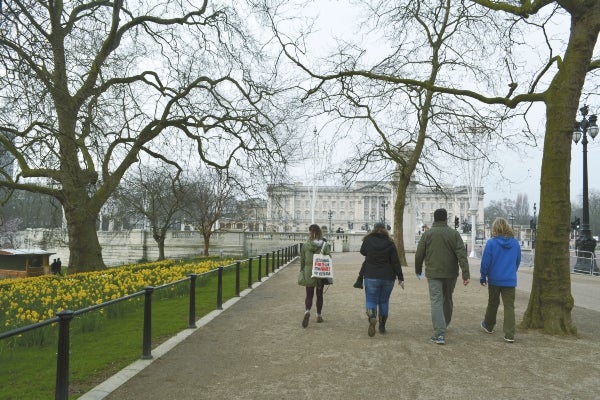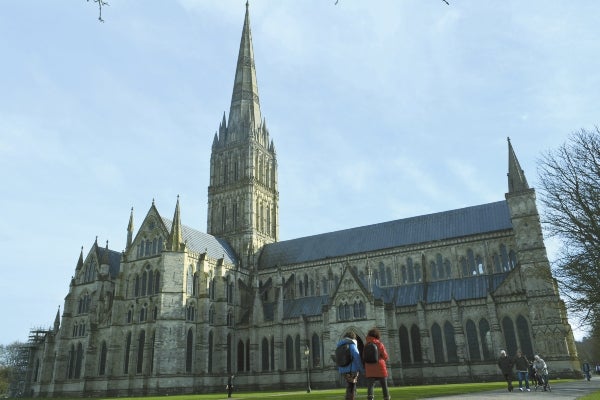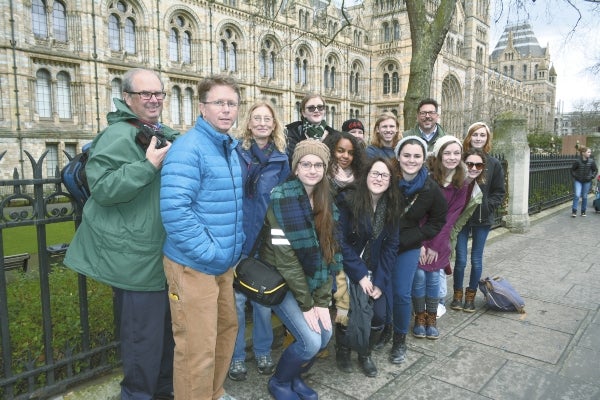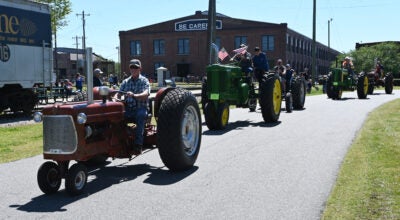Writer reflects on visit in London in light of Parliament attack
Published 12:00 am Thursday, March 30, 2017
By Susan Shinn Turner
For the Salisbury Post
Until last Wednesday, the lead for this story was going to be very different. That was before the attack on Parliament in London.
I visited London March 3-12 as a chaperone for a class trip with Catawba College. The group, led by associated professor of English Gordon Grant, visited numerous sites in that fabulous city, including the area around Parliament and Big Ben, the city’s world-famous landmark.
It was surreal to see that extremely congested area shut down. We’d walked across Parliament Bridge. We passed Big Ben numerous times during the week — by foot, by boat, by bus.
Eventually, the area will be reopened, albeit I’m sure with heightened security. In London and especially Paris, there’s a visible police presence.
I say all that to say this: You can’t be afraid in your own hometown, and you can’t be afraid to go out and see the world.
This fall, I experienced two significant events: I met someone quite special on a trip to Cuba in September, and my son, Andrew Poe, was accepted into a Catawba honors course that included a trip to London for spring break. He asked if I’d go along as a chaperone. As he was the only male student in a group of 10, he also needed a roommate. We didn’t kill each other, which I counted as a “win.”
The course, Conversation Between Culture and Science in Britain, 1660-2000, is being team taught by Joe Poston, associate professor of biology, who was also on the trip. Steve Coggin, director of Catawba’s Center of International Studies, w as a chaperone.
Once I realized I was going to London, I knew Paris was within easy reach. So I asked my friend I’d met in Cuba if he’d like to go. He said yes. Then I said yes — to marrying him, so the jaunt to Paris became our honeymoon.
I was thrilled to go with Andrew to London. Some 30 years before, I’d gone to summer school there with a group from the University of North Carolina at Chapel Hill. We’d even be staying in Russell Square, my old “neighborhood.” Really, I thought, how much could’ve changed in 30 years?
Plenty, as it turns out.
The park was still there, but the neighborhood, as was most of the city, was surrounded by construction and renovation projects. It was a neighborhood teeming with activity — shops, restaurants, hotels, the ubiquitous Starbucks. It was an energizing place to be with a group of enthusiastic college students. If you go just be ready for people — lots of people. Being spring break, there were numerous student groups there.
Since the trip was based on the course, an examination of the sciences and humanities in Great Britain, we saw a lot of things that wouldn’t normally be on my radar — and that was a good thing.
We started our London sojourn with a double-decker bus tour — a terrific way to get an overview of this world capital. We saw plenty of familiar sights along the way: Trafalgar Square with its impossibly tall statue of Lord Nelson, the National Gallery and St. Martin-in-the-Fields — a church which turned out to have a lovely underground cafe for afternoon tea; Big Ben and Parliament, the new (to me) London Eye Ferris wheel (really a wheel on steroids); the River Thames; Madame Tussauds, the British Museum (walking distance to our hotel) and more.
If you ever plan a London trip, Russell Square and Bloomsbury Square are a delightful central location. Although we did use the Underground subway system (“the Tube”) quite a bit, London is a walkable city — especially from our prime location. My Fitbit got quite a workout. We averaged nearly 9 miles a day on foot. The day that Andrew and I were on our own, we logged 11.5 miles.
That said, pack comfortable walking shoes. Running shoes are fine, but a good pair of walking shoes — yeah, I know they’re ugly — is the ticket. Some of our girls sacrificed comfort to fashion, and their feet paid for it.
As I said, science was a focus of the study. Our first museum stop was the Museum of Natural History — everything from birds to dinosaurs to whales to elephants. Whatever stops you make in London, be prepared for crowds, especially during the morning hours. We also visited the History of London Museum, which gave the students a good overview of this city’s rich history beginning in prehistoric times and ending in the present.
I couldn’t help but think how this magnificent city has persevered over the years — the plague in the Middle Ages, the Great Fire of 1666, two world wars, and, of course, present-day terrorist attacks. The city’s slogan, “Keep calm and carry on,” from World War II, still fits perfectly.
After visiting the museum, we made our way down to Parliament and the always impressive Westminster Abbey. No photos are allowed there, but we did have plenty of time to look around, and many students found the graves of famous scientists and others buried there.
Two of our days were filled with day trips — one to Stonehenge and Salisbury Cathedral, the other to Charles Darwin’s house miles away from the city.
It’s always a pleasure to visit the mysterious Stonehenge. Although its access has become more and more limited over the years — you can’t just walk up and touch the gargantuan stones anymore — the information gleaned about this iconic place has increased. We enjoyed a very cool audio tour, chock full of fascinating facts.
From there, it was on to Salisbury, our sister city. I never knew that the German pilots were under strict orders during World War II not to bomb the cathedral. Its spire — the tallest in the U.K. — served as a marker to get to London and other locations. The cathedral still stands and houses the best-preserved copy of the Magna Carta, the template for the Declaration of Independence and other crucial documents.
The soaring ceilings, gorgeous stained glass and other features of these great churches have provided centuries of solace and inspiration. They remain places of quiet respite — even in a city like London. We were also able to visit St. Paul’s during our trip. I climbed with Andrew up to the Whispering Gallery. If you know me, you know this is quite a feat, as I despise heights and get easily claustrophobic in narrow, winding staircases. The things we do for our children! Again, no photos were allowed, but we were able to witness the grandeur of St. Paul’s from an unbelievable height.
We also paid a visit to Charles Darwin’s house. Normally, this would not have been on my agenda, but it was a fascinating place to explore. The handsome home is preserved much the way the family used it during Darwin’s 40 years of life there. The scientists in our group were particularly enamored. If you’re a science nut, it’s definitely worth the trip.
On our free day in London, Andrew and I accompanied Dr. Grant on a morning walking tour down to Buckingham Palace — a must-see stop — and then through the expansive green gardens surrounding the palace. In a few weeks, these spots will be in full bloom, but already, cheerful daffodils and blooming trees greeted visitors.
Afterward, Andrew and I made our way to the Tate Britain — another popular museum and a place worth seeing. We’d also spent time earlier in the week at the National Gallery — two visits, actually. There’s no way you can see everything in a museum, so it’s nice to stop in a time or two if you can. There’s only so much you can absorb at a time. OK, there’s only so much I can absorb.
After Tate Britain, we tubed up to the Tate Modern. I’m not a particular fan of modern art, but we were intrigued with the Tate Modern, housed in a former power plant. It’s always good to stretch outside your comfort zone, especially when it comes to art.
Grant had encouraged the students to take in a show in London’s world-class theater scene. Andrew and I were able to see our top choices on consecutive nights. The first night, we saw “Beautiful,” the Carole King story, and the second night, we loved seeing “Kinky Boots.” (I’ll let you figure out who chose what.) In case you don’t know, “Kinky Boots” is the story of a staid, family-owned shoe factory whose employees start making boots for drag queens. Let me tell you, you haven’t lived until you’ve seen a half-dozen male dancers kicking up their heels in 6-inch boots. The musical, written by Cyndi Lauper, carries a positive, uplifting message: Be yourself.
That’s a pretty good message to hear — on either side of the ocean.








